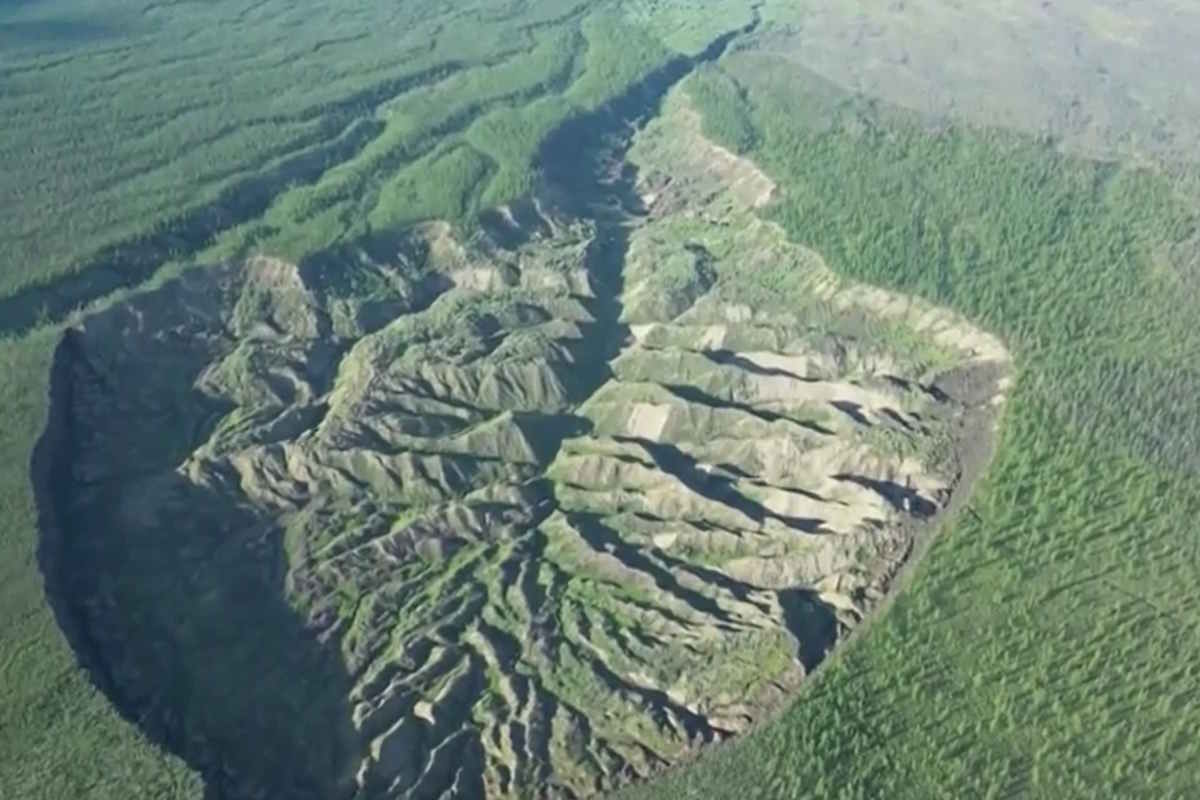Siberia's Batagaika Crater Expands Rapidly, Revealing Dangers of Global Warming Through Release of Carbon and Pathogens from Permafrost

@Reuters
In the remote heart of Siberia, a sleeping giant stirs. The Batagaika crater, ominously nicknamed the “Gateway to Hell,” is silently but inexorably expanding each year, swallowing vast amounts of frozen earth. This phenomenon, more than a mere geographic change, heralds the awakening of ancient secrets trapped in the permafrost for millennia.
As the world watches, scientists sound the alarm: the thaw could release not only carbon but also ancient, unknown pathogens. With each yard it widens, Batagaika could reshape not just maps, but the future of human and environmental health.
The Batagaika crater’s dramatic transformation
Discovered in the 1960s as a small depression, the Batagaika crater has since morphed into a massive tadpole-shaped depression. Nestled in the Chersky Range, this permafrost crater continues to grow at an alarming rate. Initially triggered by deforestation and climate change, the thawing of the permafrost has expanded the crater to approximately 2,625 feet wide and 0.62 miles long, with a depth varying between 164 and 328 feet.
The scientific significance of the Batagaika crater
Despite being a tourist attraction due to its imposing size, scientists are more concerned with the environmental impact of the crater. Batagaika’s expansion entails the release of sediments and nutrients previously trapped in the permafrost, including carbon and greenhouse gases like carbon dioxide and methane, as explained by Alexander I. Kizyakov, lead author of the study and a senior researcher at Moscow State University.
Global warming is causing rapid permafrost thaw in the Batagaika crater region, releasing organic carbon accumulated over 650,000 years. From 1970 to 2023, between about 4,409 to 5,512 tons of organic carbon have been released annually, accelerating global warming. This vicious cycle could continue until the complete loss of permafrost.
The thawing of permafrost can release pathogens that have lain dormant for years, as evidenced by the 2016 anthrax outbreak in a Siberian village, caused by Bacillus anthracis released from the soil following a heatwave. Recently, in 2022, 13 previously unknown viruses were discovered in Siberian permafrost samples.
These events raise concerns about potential threats to human health and wildlife. Scientists and authorities are desperately seeking measures to mitigate climate change and prevent further damage to permafrost, in order to avoid complete soil loss and worsening climatic conditions for similar formations in the ice-rich permafrost regions of Eurasia and North America.
Source: Geomorphology
